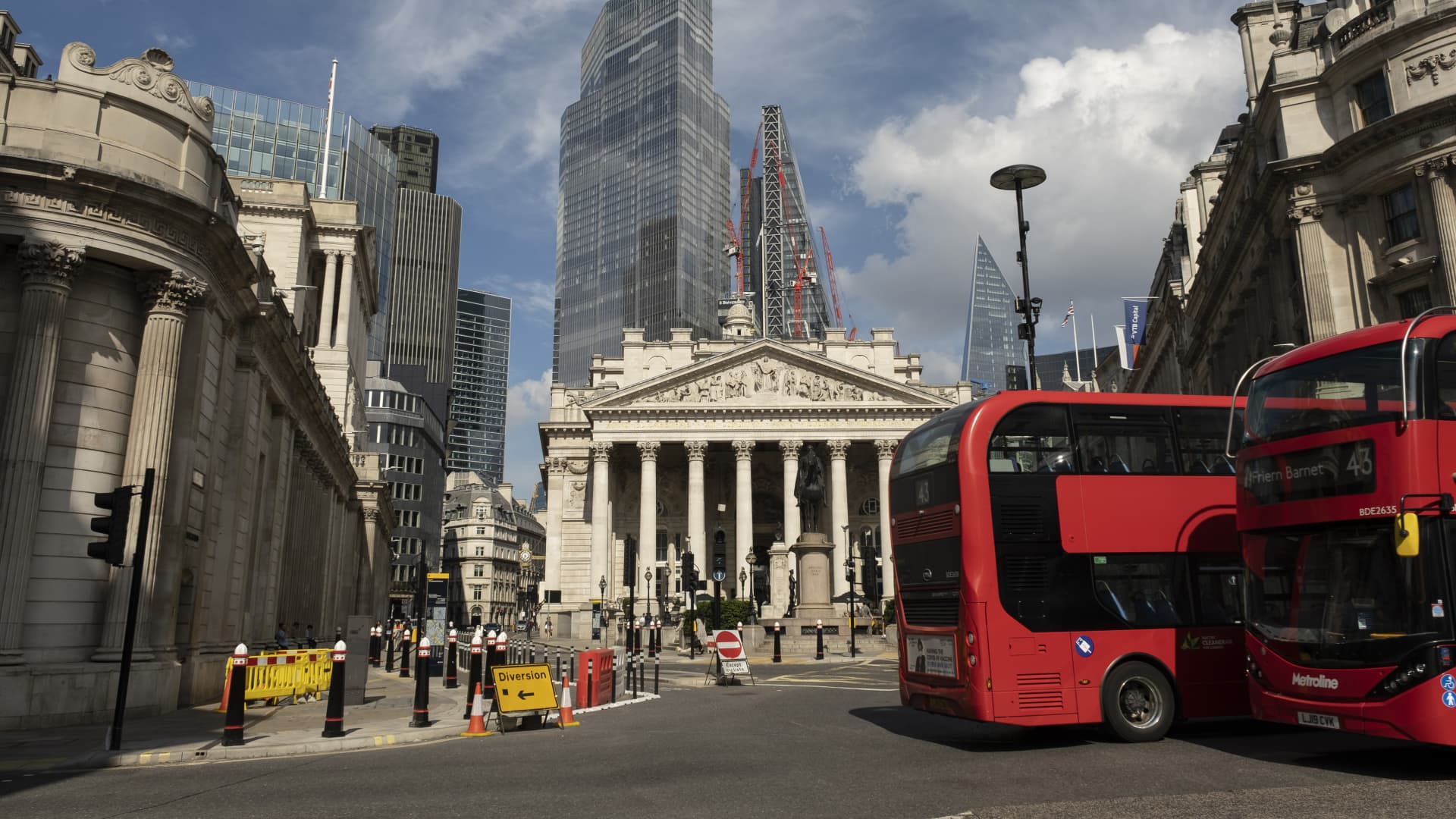
The Bank of England made its first interest rate cut of 2025 on Thursday, resuming monetary easing amid ongoing concerns over sluggish growth in the British economy.
The central bank cut its benchmark interest rate by 25 basis points to 4.5%, with a majority of seven members out of the nine-strong monetary policy committee voting in favor.
Economists had widely expected the central bank to trim rates, following a spate of lackluster U.K. growth data.
The economy flatlined in the third quarter, according to data released in December, while the latest monthly GDP reading showed the economy expanded just 0.1% in November, after shrinking by 0.1% in October. Weak retail data last month also added to expectations that the BOE would cut rates.
Britain’s inflation rate, meanwhile, fell to a lower-than-expected 2.5% in December, with core price growth slowing further — also fueling expectations that central bank policymakers would steer toward their first trim of 2025. The central bank’s inflation target is 2%.
Buses pass in the City of London financial district outside the Royal Exchange near the Bank of England on 2nd July 2021 in London, United Kingdom.
Mike Kemp | In Pictures | Getty Images
The BOE said in a statement that there had been “substantial progress on disinflation over the past two years, as previous external shocks have receded.”
Nonetheless, it emphasized that “a gradual and careful approach to the further withdrawal of monetary policy restraint is appropriate.”
BOE monetary policy committee members must now judge how to balance the need to boost growth with the inflationary risk posed by a nascent trade war, as U.S. President Donald Trump sets out to impose tariffs on America’s closest trading partners and has threatened to apply the same measures on the EU and U.K.
The bank’s Monetary Policy Committee said it expected GDP growth to pick up from the middle of this year but said it would “continue to monitor closely the risks of inflation persistence and what the evolving evidence may reveal about the balance between aggregate supply and demand in the economy.”
“Monetary policy will need to continue to remain restrictive for sufficiently long until the risks to inflation returning sustainably to the 2% target in the medium term have dissipated further,” it concluded.
Responding to the BOE’s interest rate decision, U.K. Chancellor Rachel Reeves said in a statement that the BOE’s interest rate cut was “welcome news” but said she was “still not satisfied with the growth rate.”
The chancellor claimed the Treasury’s plans to “kickstart economic growth” would work to “put more money in working people’s pockets” and said the government was committed to “taking on the blockers to get Britain building again, ripping up unnecessary regulatory barriers and investing in our country to rebuild roads, rail and vital infrastructure.”
What comes next?
Economists are now pondering the trajectory for interest rates in 2025, given that the central bank’s policymakers will be wary of the U.K. finding itself “caught between trade wars and weak domestic momentum,” Kallum Pickering, chief economist at Peel Hunt, noted earlier this week.
“The critical question facing policymakers is whether they will signal that another cut could come as soon as March or that they will stay the course set last year — with rate reductions coming at a pace of one per quarter?,” he said in emailed comments Monday.

Peel Hunt’s base case, he said, was that the BOE will maintain a one-cut-per-quarter pace and that the bank will wait until the May meeting before following up with a second trim this year.
“However, risks are skewed towards policymakers signalling a willingness to react more forcefully to economic weakness – thus hinting at another cut as soon as the 20 March meeting already,” Pickering said.
Andrew Wishart, senior U.K. economist at Berenberg, noted that the central bank might perceive a need to relax monetary policy more rapidly.
“Until now, the BOE has cut at alternate meetings, but a stagnating economy and declining employment argue for more urgent action,” he said in a note Monday.
“The central bank judged the labour market to be broadly in balance at the 18 December meeting, before payroll data for December revealed further job losses. On that basis, it is sensible for the BoE to lower interest rates to prevent a larger drop in employment.”
The BOE’s first trim of the year comes after a tough couple of months for Reeves who has faced sustained pressure since unveiling Treasury fiscal plans last fall that set out to increase the tax burden on British businesses. The package attracted widespread criticism from industry leaders over the potential impact on investment, jobs and economic growth.
Reeves defended the plans, saying tough measures were necessary to achieve economic stability and that there was “no alternative.” She has also said tax rises on businesses would be a one-off, telling the Confederation of British Industry last November that she was “not coming back with more borrowing or more taxes.”
Some economists believe the central bank could take a more gradual approach given the inflationary risks posed by potential Trump tariffs, and the fiscal position being taken by the U.K. government.
“Despite the recent weak news on activity and the uncertainty around the global outlook due to Trump’s US import tariffs, the stronger news on domestic price pressures means the Bank of England will probably continue to cut interest rates only gradually,” Ashley Webb, U.K. economist at Capital Economics, said in a note Wednesday.
“But while CPI inflation may rebound from 2.5% in December last year to around 3.0% later this year, we think a fall to below 2.0% next year will prompt the Bank to cut interest rates … to 3.50% by early 2026, rather than to 3.75-4.00% as investors anticipate,” he noted.




